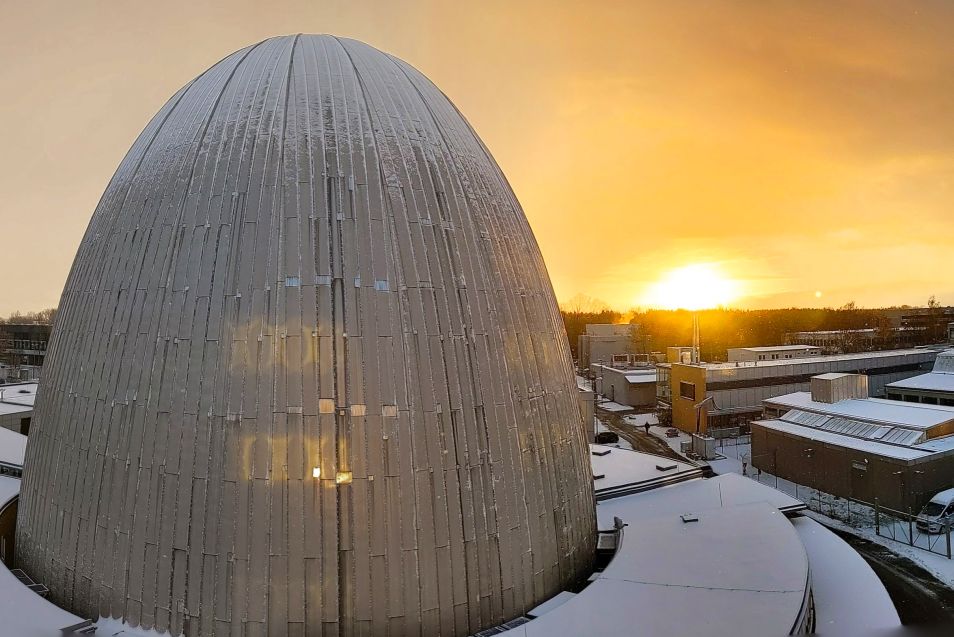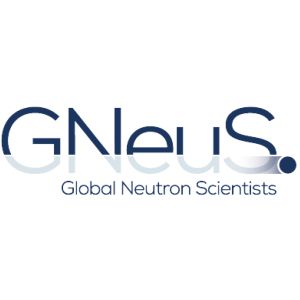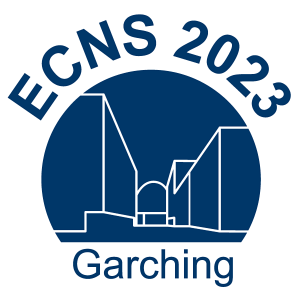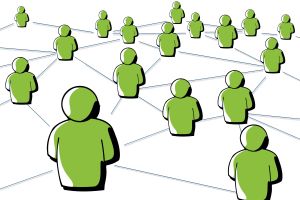MLZ ist eine Kooperation aus:
 > Technische Universität München
> Technische Universität München > Helmholtz-Zentrum Hereon
> Helmholtz-Zentrum Hereon
 > Forschungszentrum Jülich
> Forschungszentrum Jülich
MLZ ist Mitglied in:
 > LENS
> LENS > ERF-AISBL
> ERF-AISBL
MLZ in den sozialen Medien:

MLZ
Lichtenbergstr.1
85748 Garching
Newsletter III/2022
Jump directly to the chapters! (and don't forget to enlarge the pictures by clicking them!)
» Editorial» Instruments» Events» People» UsersEditorial
Coming back with Neutrons in Q1 2024
The past year has focused on upgrades and improvements of our instrument suite. We will report on the recent achievements, which are just lacking a test with neutrons. One major upgrade is the transfer of two instruments from the former neutron source at Helmholtz Zentrum Berlin to Garching. Most of the instrument components arrived on November 8th at the MLZ. Our university partners have acquired considerable funding for further development of instrumentation at MLZ within the ErUM-Pro scheme of the federal German research ministry (BMBF). We report in detail about the successful applications in this newsletter.
The bad news to report is the timeline for the restart of our neutron source. The difficult fabrication of the replacement part in the heart of the reactor, the so-called central channel, defines the earliest possible restart of our user operation in early 2024. We aim to discuss details and future projects during the annual MLZ User Meeting in December. On this occasion, we will also present the first ideas on our envisaged upgrade program MORIS. More intense discussions with you on this topic are planned in a user workshop on-site at the MLZ on April 26th/27th, 2023.
We hope to see you soon in Munich; either at our User Meeting or at the ECNS 2023 which is organized by the MLZ this time.
Prof. Dr. Martin Müller (GEMS, Helmholtz-Zentrum Hereon, MLZ Director / Spokesperson)
Prof. Dr. Peter Müller-Buschbaum (FRM II, TU München, MLZ Director)
Instruments
» Successful ErUM-Pro proposals» Welcome at MLZ!
Successful ErUM-Pro proposals
Besides continuation projects, several new ones have just started that had been successful within the ErUM Pro call for proposals. In total, 14 projects concerning instrument and method development at the MLZ/ FRM II were awarded funding, with a total volume of grants of 7.9 Mio€. Projects started on October 1st, 2022, with a duration of three years.
The topics of the sponsored projects span the entire range from sample environment developments for dedicated applications, the design and construction of add-ons to existing instruments to enhance performance, to the commissioning and finalization of instrument construction projects.
KOMPASS and POWTEX continue
Among the continuation instrument projects is, e.g., the commissioning and early science at the polarized three axes spectrometer KOMPASS. After the successful demonstration of the polarized diffraction mode, the main emphasis in the new funding period will be on the analyzer part to fully develop the polarized three axes spectroscopy (University of Cologne).
The powder diffractometer POWTEX project also received continuation funding (RWTH Aachen). Besides the finalization of the installed hardware, the special focus is on the further development of the Rietveld analysis software for multidimensional time-of-flight powder diffraction data.
Sample environment toolboxes for special applications and digital twins
Two new projects will develop dedicated sample environment toolboxes that enable research for application-relevant topics.
One of them is related to the investigation of magnetic nanoparticles for hyperthermia applications (HYMN; TUM) where a set-up for the provision of relevant excitation frequencies will be built for in-situ studies of magnetization profiles using small angle scattering and (heat) dissipation mechanism (spectroscopy).
Secondly, two electrochemical hydrogen loading stations, mainly for engineering materials, will be developed, both for ex-situ and in-situ loading experiments (H2MAT; TUM, FAU Erlangen, and VDM Metals). Given a hydrogen economy, materials development that is resistant and suitable to hydrogen exposure will become increasingly relevant.
Additionally, the instrument STRESS-SPEC will get a new tension rig to be used together with the six-arm robot and the optical positioning system that is already in use at the instrument. Within the same project (AutoTron; FAU Erlangen, TUM), a ‘digital twin’ implementation will improve ease of use and measurement planning, especially for non-trivial sample shapes. Together with the planned new detector, STRESS-SPEC thus will be ideally equipped to address complicated shapes, e.g. 3D printed materials or specimens from additive manufacturing.
Further advancement of the positron instrument suite
Two of the experimental stations at the positron source NEPOMUC also received funding for further upgrades.
The coincident Doppler broadening spectrometer CDBS will get a new sample stage and a detector upgrade for better spatial resolution and enhanced efficiency. Moreover, the measurement possibilities will be extended to samples under ambient or humid conditions and thus opening the field of applications (POSI DEFECT; TUM).
The scanning positron microscope SPM will be commissioned within the project POSIScan project (UniBW). With its new place at the high-intensity position beam at the NEPOMUC source, a unique instrument will go into operation that enables microstructural analysis on a sub-micrometer scale using Positron annihilation lifetime spectroscopy.
Beam conditioning and detection
The instrument PUMA will get a new nested mirror optics option to focus down to even smaller sample sizes (nm04Puma, KIT).
Two other granted proposals are dedicated to method development. The project SIM-mode prisms (TUM) aims at the development of Wollaston prisms for advanced neutron beam/neutron spin manipulation not only in time but also spatially. The developments will be used to set up a new optional transversal spin-echo add-on to study quantum entanglement or extend the MIEZE technique to large scattering angles. The new modular add-on will be usable for the instruments RESEDA and LADIFF.
The medical treatment facility MEPAPP will be equipped additionally with an imaging detector for gamma radiography. The system is foreseen for patient positioning and improved dose planning purposes (INGRAMM, TUM) but it can also be used for materials science applications at the NECTAR imaging station of MLZ.
The project EMNI (TUM) is working on new event-based scintillator detector systems, that first have been demonstrated for imaging purposes. In the current project, these new detector systems are to be studied to extend the range of applications towards time-resolved applications for example needed for the MIEZE technique and, additionally, larger detector areas.
Building new and further developing existing instruments is a continuous process at the MLZ and a large part of this endeavor is realized via the ErUM-Pro projects at university partners, supported by the Federal Ministry of Education and Research (BMBF). We are looking forward to seeing these projects implemented at the instrument suite of MLZ in the current funding period 2022-2025.
W. Lohstroh (MLZ)
Welcome at MLZ!
On a sunny November morning, six containers on heavy-duty trucks arrived at the MLZ in Garching. They delivered again parts of the new instruments LaDiff and FIREPOD from Helmholtz-Zentrum Berlin. Read the whole story in the gallery!
C. Hauf (MLZ)
Just open the first picture and then use the arrows at the upper right or your keyboard’s arrow keys to navigate!
Events
» It's LabCourse time again!» A week full of neutrons, lasers, and open data....
» Neutron Schools at MLZ
» Jana2020 Workshop at Garching
» Celebrating 20 years of NeT
It's LabCourse time again!
Between Sept 5th and 16th, 2022, the 24th JCNS LabCourse took place once again in person at Forschungszentrum Jülich (FZJ) and MLZ.
The course is open to students of natural sciences from all over the world. Participation is free of charge and travel expenses are subsidized. The course is financed by FZJ with support from the EU project SoftComp. 66 participants were selected from more than twice that many applications. About half of the students came from foreign institutions in 14 countries. The participation of female students was 45%, higher than in the years before.
The first week of the course was dedicated to lectures and exercises on theory, instrumentation, and applications in condensed-matter research. In the second week, twelve world-class instruments were made available at the MLZ. Due to the ongoing repairs at FRM II experiments could only be performed as “dry runs”. Nevertheless, the students enjoyed doing this in the actual laboratory environment. In addition, many instruments were able to supply “virtual experiments”. The students also appreciated that components of the instruments could be visited which are inaccessible during operation.
R. Zorn (Forschungszentrum Jülich)
A week full of neutrons, lasers, and open data....
… not to forget magnetism, crystal growth, beer, collaborations, card games, and unicorns!
This year, the Czech-Bavarian mini-school for large-scale facilities and open data took place as an in-person event, with all the associated advantages (actual practicals, discussions as well as the occasional drink after a long day of doing science) and disadvantages (delayed trains).
We started in Garching with lectures on neutron scattering techniques, experiments on our virtual PANDA instrument, and a tour of the FRM II. After delving deep into neutron scattering, we left Munich to discover the wonderous world of crystal growth and low-temperature bulk measurements at Charles University and the MGML laboratories.
Another highlight of the mini-school was the visit to the ELI beamlines, where we experienced the power-pulsed Petawatt lasers and visited the resonators at the heart of the facility.
On the last day, we elucidated the dark side of science and contributed to open science by analyzing openly available neutron scattering data and publishing our findings on arXiv.
J.K. Jochum (MLZ)
Neutron Schools at MLZ
The MLZ is happy to host those neutron schools! Many participants came back later as users and told us that they got hooked by that school.
Do you like to organize a neutron school at Garching as well? Don’t hesitate to present your idea to the MLZ User Office!
Jana2020 Workshop at Garching
Diffraction data (either X-ray or neutron) is an important source of unique information on crystalline and/or magnetic order in solids down to the sub-nm scale. The analysis of these structural details requires powerful and professional software. Among these, Jana2020 (a development project of the Institute of Physics, Czech Academy of Sciences) offers and combines a series of unique key features such as simulation of aperiodic/modulated structures, embedded magnetic space group formalism, refinement of anharmonic displacement parameters, etc.
The MLZ Science Group “Structure Research” organized a two-day workshop on Jana2020 for the refinement of powder or single crystal diffraction data on the Garching campus on October, 3rd-5th. The authors of Jana2020 (V. Petricek, M. Dusek, and M.S. Henriques) presented new capabilities of their software to more than 20 participants through lectures, hands-on training, and lively discussions on different diffraction-related topics and real examples.
A. Senyshyn (MLZ), M. Meven (RWTH Aachen)
Celebrating 20 years of NeT
A public workshop was held at the IAS auditorium in Garching in context with the 20th anniversary of “The European Network on Neutron Techniques Standardisation for Structural Integrity“ or short NeT (www.net-network.eu). The NeT network is a ~30-partner collaboration, based on voluntary in-kind contributions by the participants, that primarily works on residual stress assessments of welds relevant to nuclear engineering applications. MLZ is a partner in NeT since almost the beginning and hosted both the workshop and the subsequent biannual progress meeting of the Steering Committee this time.
The special characteristics of NeT are the extensive residual stress measurement round-robin exercises, utilizing a variety of measurement techniques, and the equally extensive numerical simulation round-robin exercises. Over the years, NeT has arguably produced some of the best-characterized welding residual stress benchmarks in existence.
The workshop aimed to provide insight into the work within NeT, including the development of the specimens, the materials characterization work, residual stress measurement techniques, numerical assessment methods, the lessons learned, and how these are utilized in nuclear engineering problems.
Three plenary talks on how the results from NeT have benefitted and progressed the structural integrity assessment of welds in the industry were given, followed by eight shorter topical presentations on the methods used for evaluating residual stresses. Two of those talks on mechanical stress measurement methods were contributed online. The meeting was in a hybrid format with about 35 scientists and postgraduate students from the TUM engineering department attending the workshop in person, while up to another twelve from around Europe followed the presentation online.
M. Hofmann (MLZ)
People
» Newly arrived» First GNeuS fellows started at MLZ!
Newly arrived
Lukas Beddrich
Having joined the RESEDA team as the second instrument responsible, I will aid in the commissioning of the upcoming instrument upgrades. Furthermore, I aim to streamline the data reduction and analysis pipeline, giving the users easy access to high-resolution spectroscopy methods.
During my PhD, I worked on critical phenomena in itinerant magnets and the characterization of low-dimensional magnetic systems using inelastic neutron scattering methods and magnetometry. I want to pursue these topics by leveraging the unique capabilities at MLZ.
Piotr Fabrykiewicz
I am the new second instrument responsible at HEiDi, the single crystal diffractometer at the hot source.
During my PhD studies at the Faculty of Physics, University of Warsaw, Poland, I investigated some textbook materials, like hematite or chromium, in which I observed magnetic phenomena which disagree with the symmetry assigned to their crystal structure. Using X-ray, synchrotron radiation, and neutron diffraction, I found that the symmetry of their crystal structure is slightly (but measurable) lower than commonly accepted.
Alexander Wolfertz
Since September, I am a postdoc at the NECTAR beamline. I am working on event mode neutron imaging with high temporal and spatial resolution.
Before coming to the MLZ, I did my PhD in nuclear physics at the Paul Scherrer Institut (PSI) and the École Polytechnique Fédérale de Lausanne (EPFL). In my thesis, I developed a detector for high-resolution neutron emission measurements of individual spent nuclear fuel rods. I am looking forward to having engaging discussions and solving interesting problems together.
First GNeuS fellows started at MLZ!
GNeuS is an MSCA co-funded programme that will offer a total of 45 fellowships, each for a typical duration of 24 months. Implementation will be achieved in three recruitment calls (15 fellows recruited per call), organized in November 2021, 2022, and 2023. Several colleagues of the first cohort started their projects at the MLZ during the last months. Meet them below!
Sheetal Devi
Namaste!
I have recently joined JCNS@MLZ as a post-doc fellow under the GNeUS project. GNeUS offers an opportunity to establish a solid foundation for my professional career and to contribute to the improvisation of neutron facilities in India. My research investigates the influence of correlated disorder in frustrated magnetic systems by combining systematic solid-state synthesis with controlled disorder and a range of advanced neutron scattering techniques.
Before, I worked as an Integrated-PhD student at the Indian Institute of Technology Mandi, India, where I investigated the physical properties of chemically disordered pyrochlore oxides and explored the possible avenues to tune the disorder via external perturbations (e.g. magnetic field and non-magnetic substitution).
Ramya Koduvayur Ananthanarayanan
I am a new GNeuS Postdoc fellow at MLZ, aiming to address the inherent structure-property-function relationships in complex materials using Rheo-SANS during transient shear flows, and other scattering techniques. The GNeuS program also promotes overall personal development.
During my PhD, I studied the relaxation processes in structured materials (crosslinked polymers, colloid-polymer gels/soft glasses, and supramolecular systems) using oscillatory rheology and constitutive modeling.
To know more, please read https://sor.scitation.org/doi/abs/10.1122/1.5045073
Ghanate Madhu
Hello everyone! I received my PhD from Bhabha Atomic Research Centre, India. I just joined as a postdoc at the SANS–1 group under the GNeus program.
I am mainly working on quench safety and quench protection of metal-insulated superconducting coils for the next-generation sample environment magnets. In this project, we are taking advantage of high-temperature superconductor (HTS) with metal as insulation technology to develop a range of superconducting magnets for neutron scattering (SANS-I), which will be used at the MLZ.
Iaroslav Meleshenkovskii
As a new member of JCNS, I will lead the EU MAGFAST project (GNeuS grant) devoted to R&D with a fast neutron inelastic scattering technique for the characterization of rare-earth elements in magnets.
Before I worked at CEA and SCK-CEN. At CEA, my R&D activities were devoted to the characterization of nuclear waste packages by photofission. At SCK-CEN and Université libre de Bruxelles, I received my PhD degree and developed algorithms for the determination of uranium and plutonium isotopic composition.
Pikesh Pal
Namaste!! I recently joined as GNeuS postdoctoral fellow in the neutron method group (JCNS4) at MLZ and proposed to work on emergent novel phases of quantum material in extreme conditions.
Before, I worked as PhD scholar at the National Institute of Technology Rourkela, India. My field of research was the synthesis and characterization of magnetoelectric multiferroics for structural, magnetic, and magnetoelectric correlation in both bulk and nanoscale.
Find my profile at
https://scholar.google.co.in/citations?user=XPUbYzcAAAAJ&hl=en and
https://www.researchgate.net/profile/Pikesh-Pal
Debasish Saha
I am a new member at the JCNS@MLZ, joined as a GNeuS fellow on September 1st, 2022. In this project, I will investigate the interdiffusion of deuterated and protonated polymers making up colloids (latex particles) that internally diffuse during the film formation, using small-angle neutron scattering (SANS).
I received my PhD in Physical Chemistry from the Westfälische Wilhelms-Universität Münster and the reserach work was carried out at Forschungszentrum Jülich. My field of interest is experimental soft matter and I was working at the Bhabha Atomic Research Centre as a DST Inspire Faculty prior to joining the GNeuS project.
Find an interesting publication at https://pubs.rsc.org/en/content/articlelanding/2021/sm/d1sm00264c/unauth and my profile at Google Scholar!
Interested to become a GNeuS fellow as well? Don’t miss the call of 2022 and apply before January 18th, 2023!
Find all details at https://gneus.eu
Users
» Be a part of ECNS 2023!» Remarks of the MLZ User Committee
Be a part of ECNS 2023!
At the moment, the programme committees are reviewing more than 500 abstracts that had been submitted for the 8th European Conference on Neutron Scattering to create a diversified programme.
Between March 20th and 23rd, 2023, the community will listen to more than 150 talks and visit many, many posters in two poster sessions. Two Micro-Symposia – one organized by DEUNET, the other one on HICANS & CANS – will make the choice of which of the parallel sessions to visit even more difficult…
The programme will be online before Christmas – and you can still register as an early bird. Don’t forget it!
All details and updates can be found at www.ecns2023.eu.
Remarks of the MLZ User Committee
It was great to see some of you in person at the two dedicated neutron conferences this year: first at the ICNS 2022 in Buenos Aires in August, then at the ESS&ILL User Meeting in Lund in October. In Buenos Aires, apart from tango and large steaks we were all impressed with the enthusiasm of the Argentinians to build their new reactor-based neutron source. Although they have quite a bit to go, their engineering approach was very impressive, in particular when you consider the economic challenges Argentina is facing today. For those of us who were in Lund, we could also witness the large progress ESS has made into becoming a world-class neutron facility. As with everybody else they have been delayed due to Covid-19 and the terrible war in Ukraine but are well on track now and are looking forward to welcoming the first users in 2027.
The situation at MLZ
As you all know by now, there will be no possibility to do any neutron experiments at MLZ during 2023 as the central channel of the FRM II has a defect. Unfortunately, it cannot be repaired but must be replaced completely. The MLZ directorate and the engineering staff at FRM II are working relentlessly to get this fixed as soon as possible.
As I understand the replacement work is progressing according to schedule and we can look forward to starting using MLZ at the beginning of 2024. An update on the work is being given at the User Meeting next week. In the meantime, we have to use other facilities but don’t forget to publish the excellent data you already collected at MLZ before the shutdown!
We can also look forward to the 8th European Conference on Neutron Scattering (ECNS 2023) in March 2023. The conference will take place at the TUM Department of Mechanical Engineering and the new Science Congress Center Munich, located near the MLZ at Garching. If you haven’t signed up, do so! Looking forward to seeing you there.
Tribute to Michael Steiner
On a sad note, we learned that the renowned neutron scientist and former BER II director Prof. Dr. Michael Steiner passed away in Berlin on Nov 5th, 2022 at the age of 79. For the neutron user community, he is known and very much appreciated for his service as chair (2009-2014) of the European Neutron Scattering Association (ENSA) which represents the interests of 4500 users of neutron sources.
I hope to see you in Garching in December, but if not, I would like to wish you all a Merry Christmas and a Happy New Year 2023.
On the behalf of the MLZ user committee
Tommy Nylander

Our colleague Christian Franz captured this beautiful picture of the atomic egg – thank you for sharing!
We wish a happy wintertime to all our users!
Welcome to the MLZ Newsletter!
The MLZ Newsletter is sent directly to your inbox. All our users are invited to subscribe to it via GhOST!
You aren’t a scientific user but interested? Then just send an email to the MLZ User Office!
MLZ ist eine Kooperation aus:
 > Technische Universität München
> Technische Universität München > Helmholtz-Zentrum Hereon
> Helmholtz-Zentrum Hereon
 > Forschungszentrum Jülich
> Forschungszentrum Jülich
MLZ ist Mitglied in:
 > LENS
> LENS > ERF-AISBL
> ERF-AISBL
MLZ in den sozialen Medien:










































